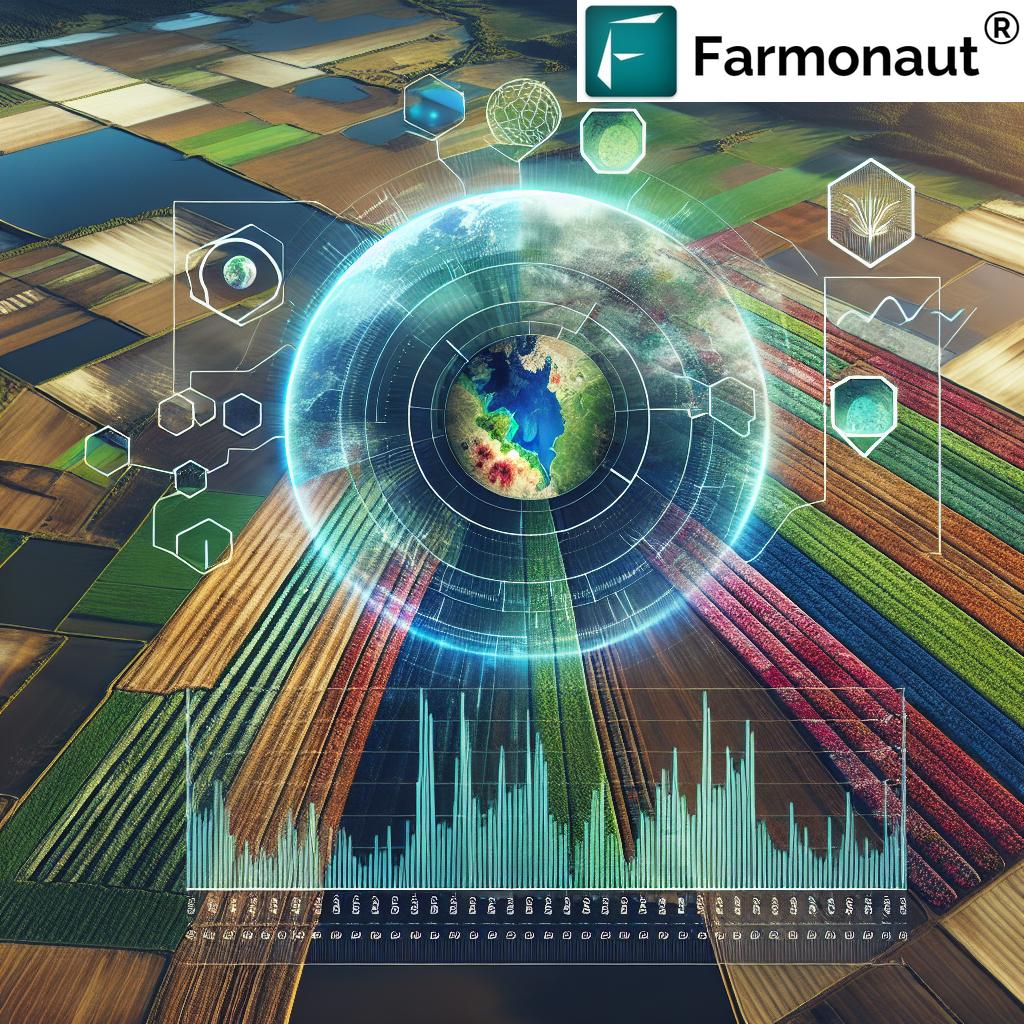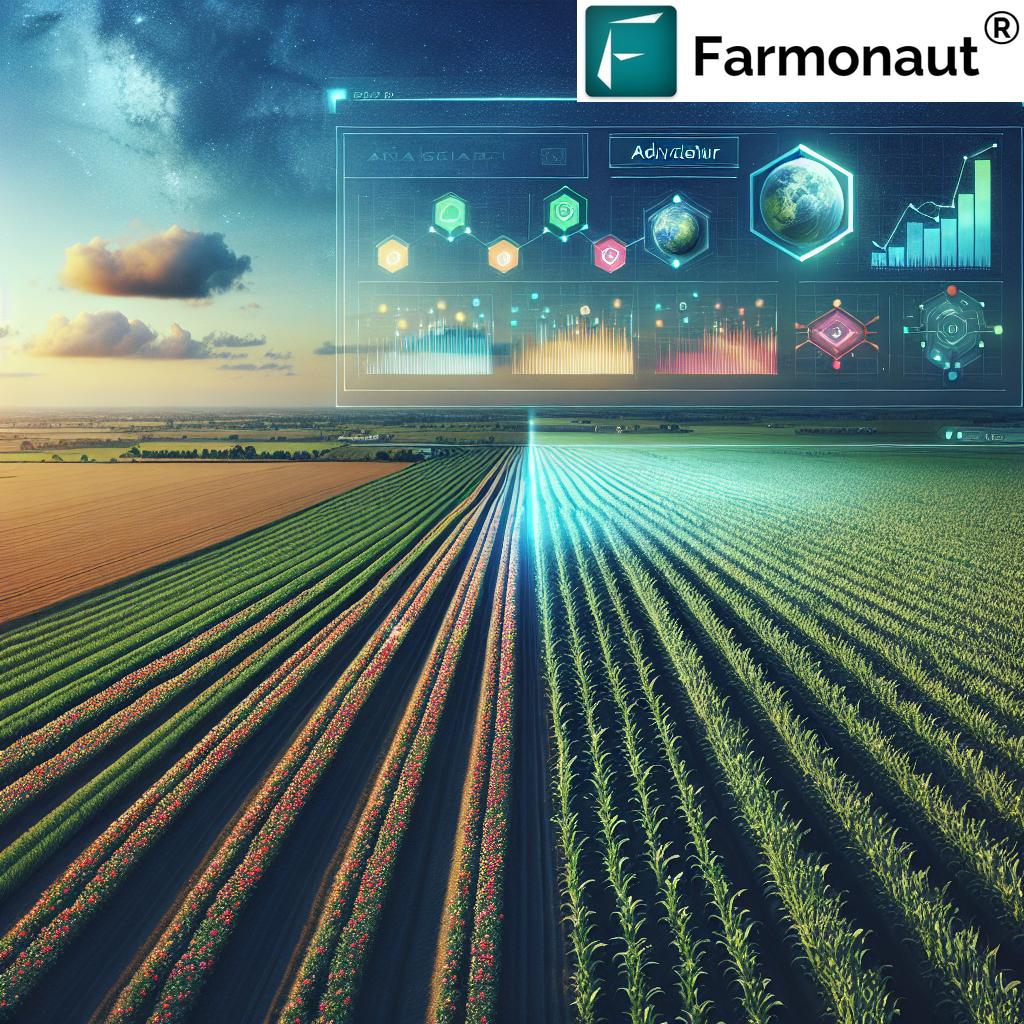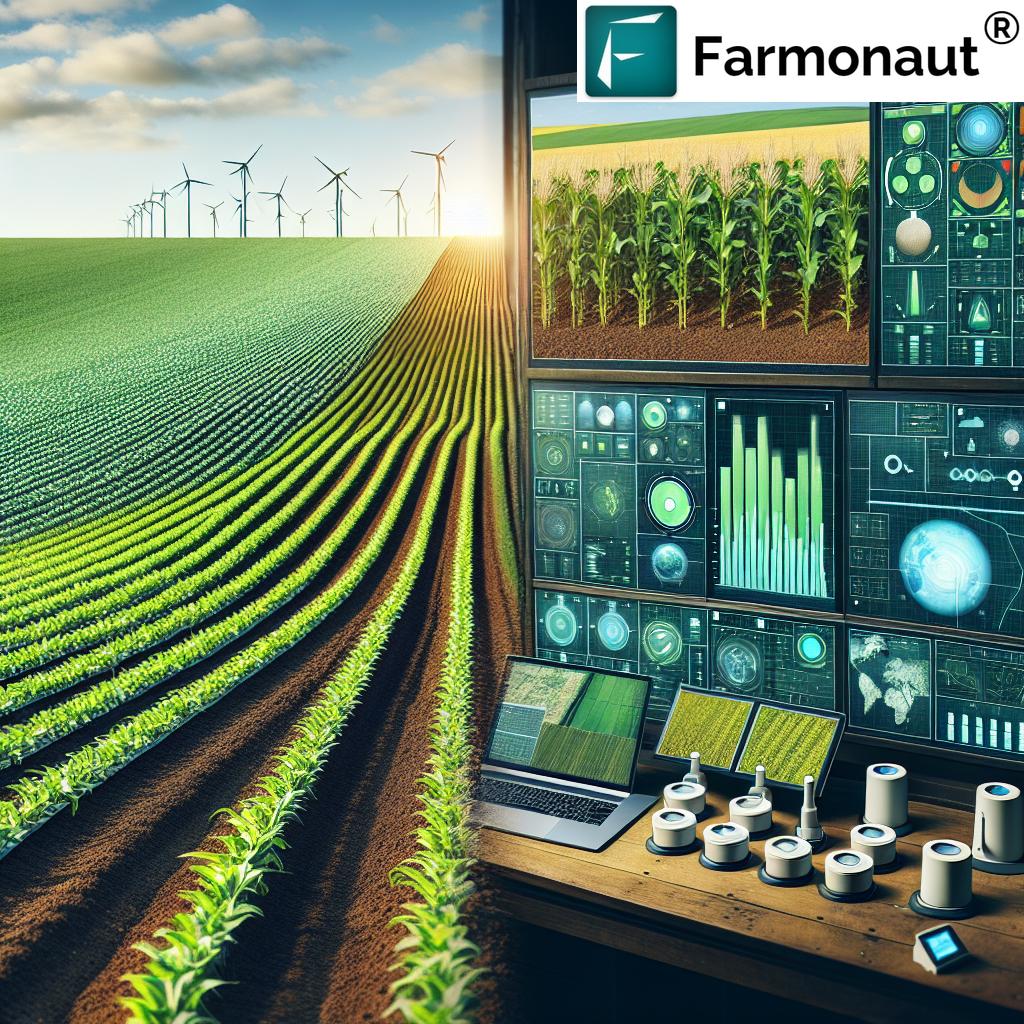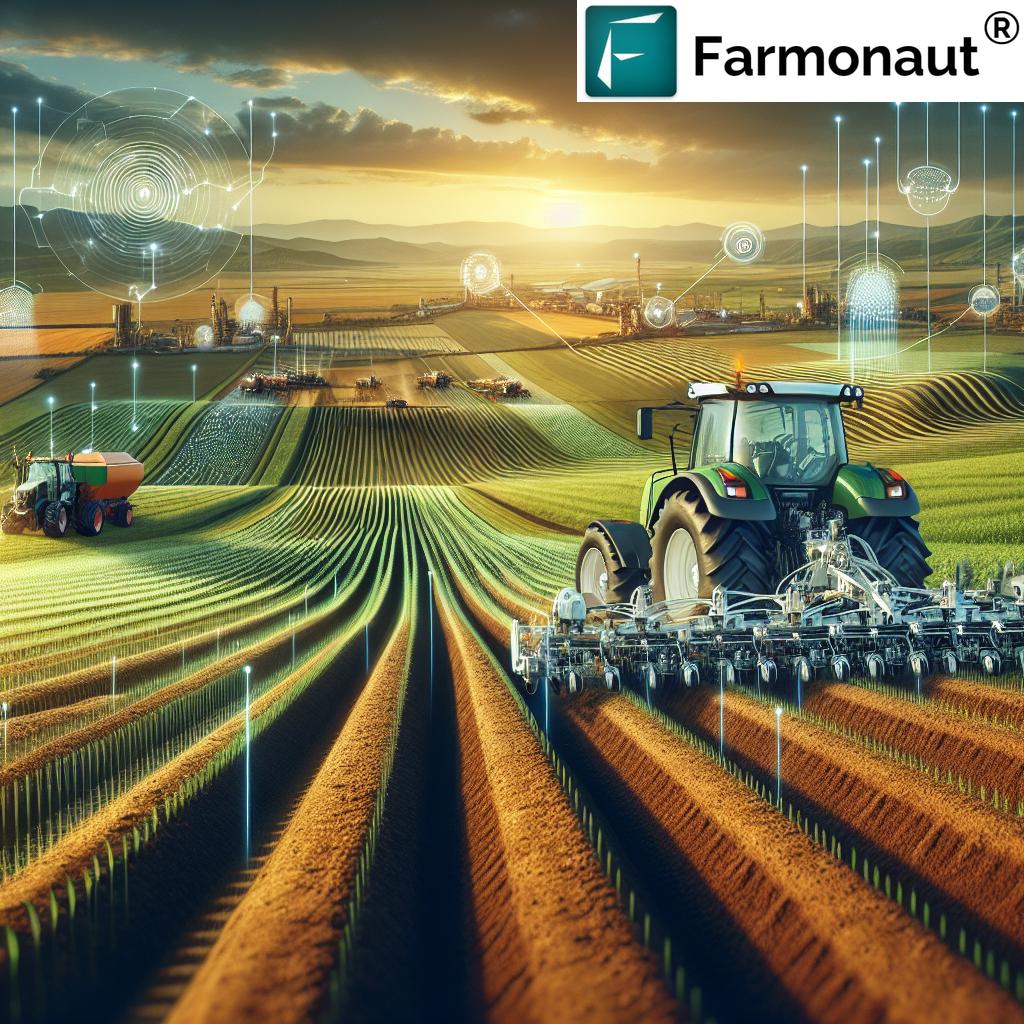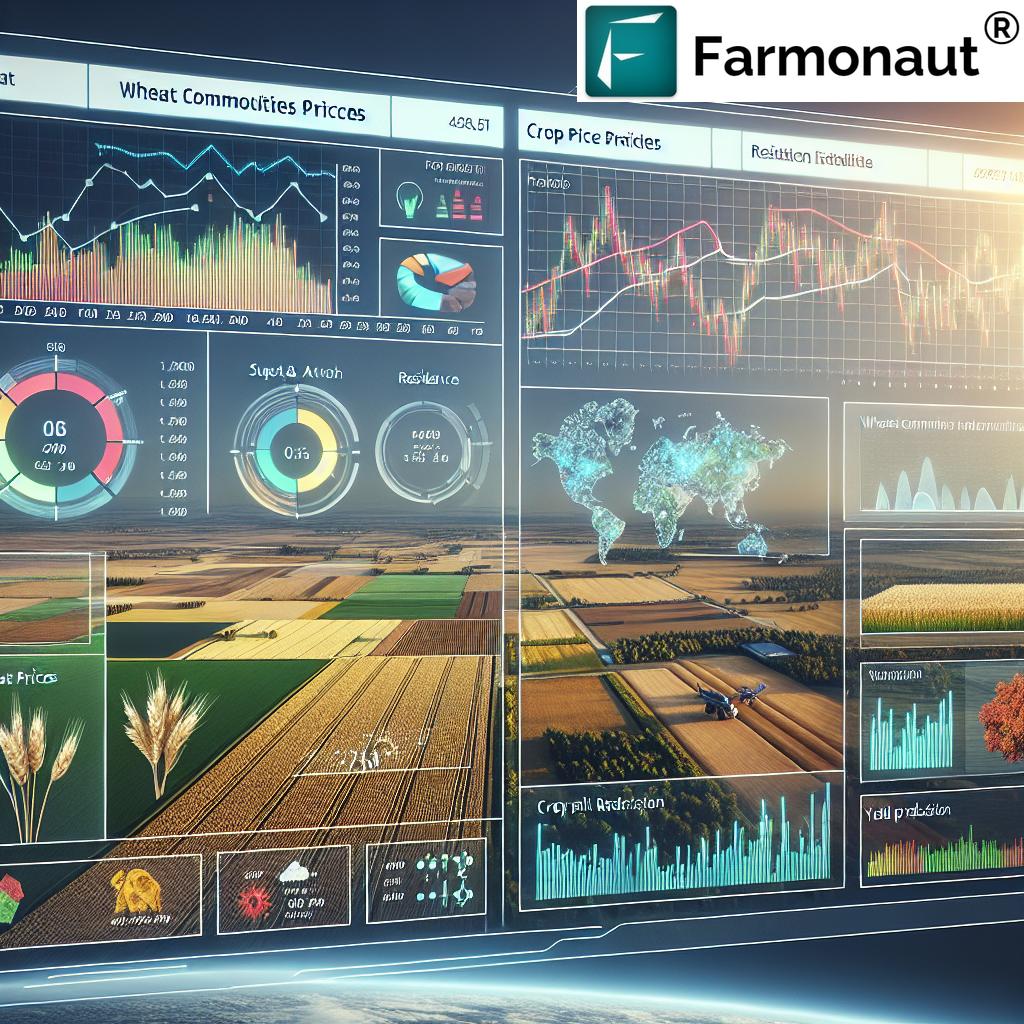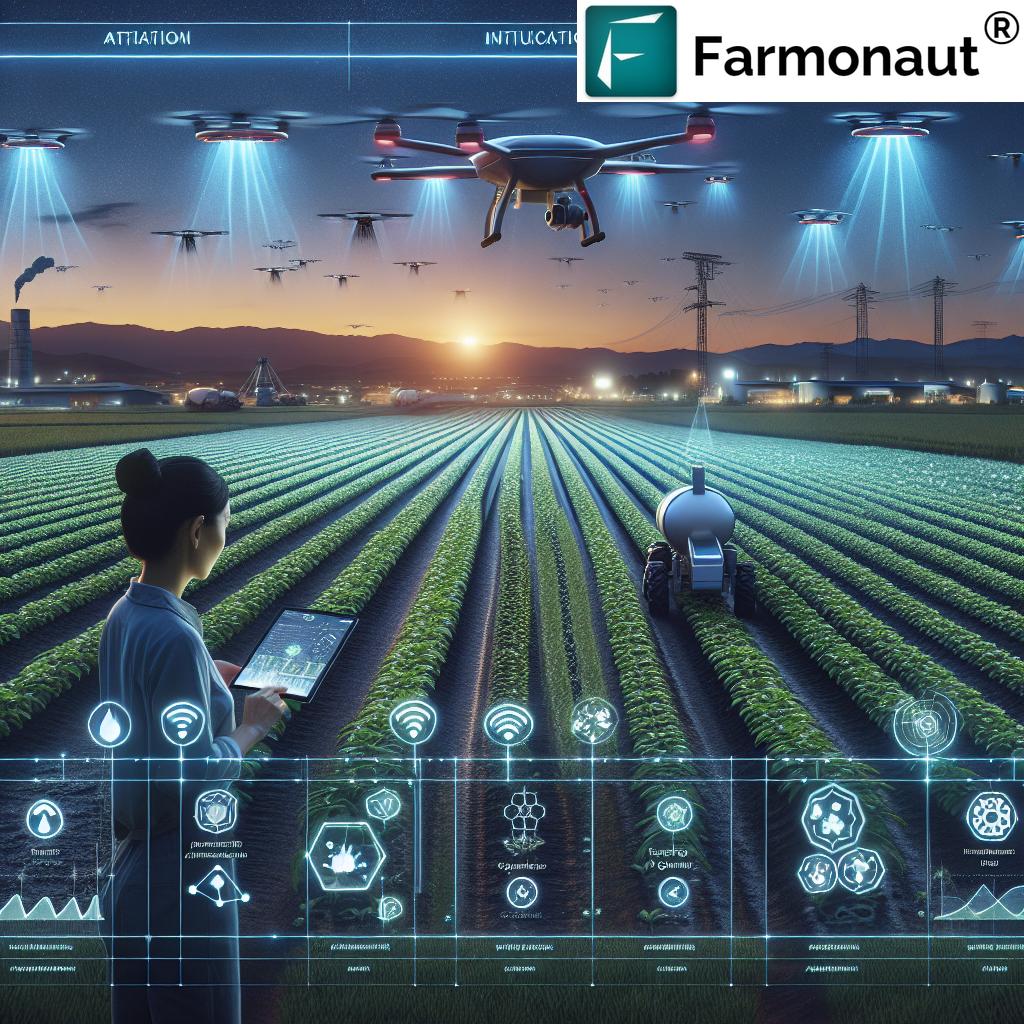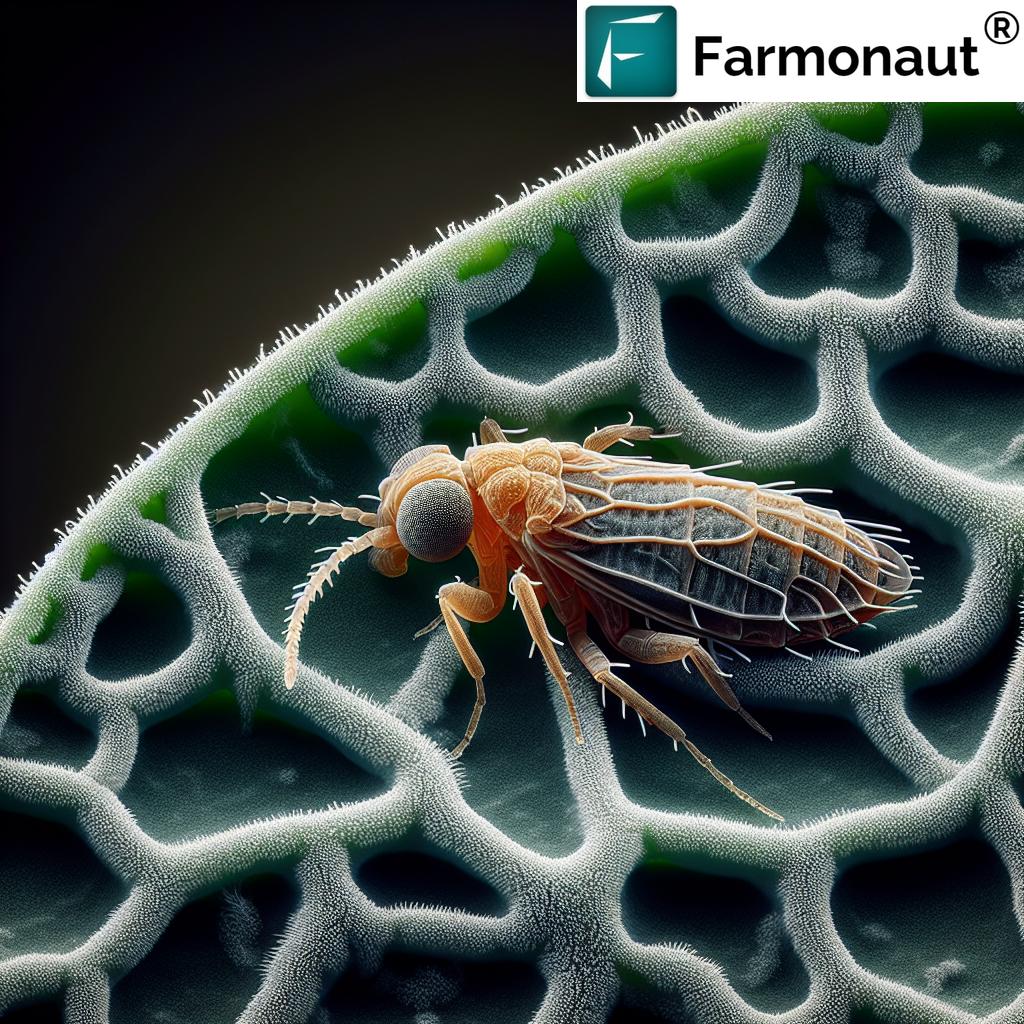Revolutionize Your Farm with Variable Rate Seeding: Mastering Precision Agriculture for Optimal Crop Yields
“Variable rate seeding can increase crop yields by up to 20% compared to traditional uniform seeding methods.”
Welcome to the future of farming! In this comprehensive guide, we’ll explore how variable rate seeding (VRS) and precision agriculture techniques are transforming the agricultural landscape. As pioneers in agricultural technology, we at Farmonaut are excited to share our expertise on this revolutionary approach to crop management.
Understanding Variable Rate Seeding in Precision Agriculture
Variable rate seeding is a cornerstone of precision agriculture, allowing farmers to optimize their seed distribution based on field variability. This advanced technique leverages cutting-edge technology and data analytics to ensure that every part of your field receives the ideal seed population for maximum productivity.
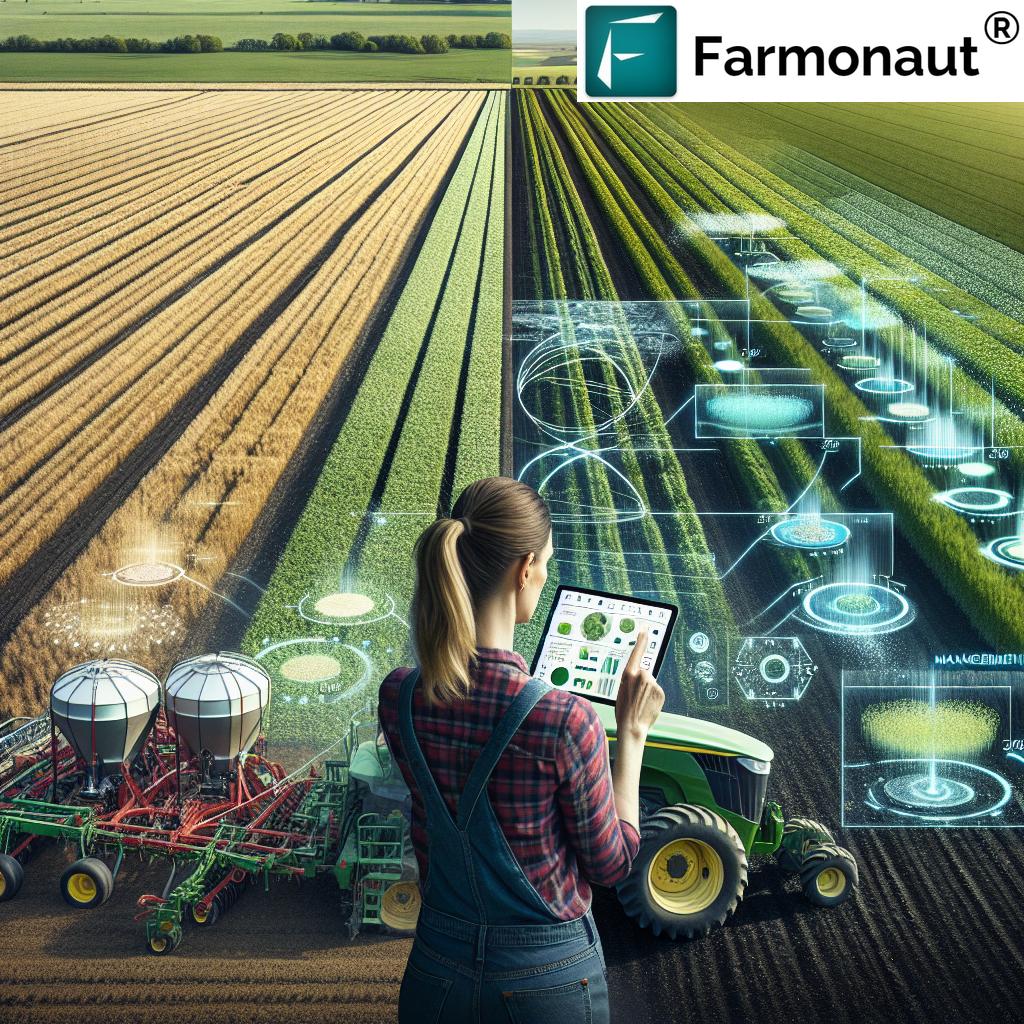
By adjusting seeding rates based on factors such as soil type, topography, and historical yield data, VRS helps farmers:
- Increase crop yields
- Reduce seed waste
- Optimize resource allocation
- Enhance overall farm profitability
The Science Behind Variable Rate Seeding
At its core, VRS relies on the principle that different areas within a field have varying yield potentials. By leveraging advanced soil mapping technology and data analytics, we can create detailed management zones that guide our seeding decisions.
Key Components of VRS Technology
- GPS and Satellite Imagery: Precise field mapping and real-time positioning
- Soil Sensors: Gathering data on soil moisture, nutrients, and texture
- Yield Monitors: Collecting historical yield data for analysis
- Variable Rate Seeders: Equipment capable of adjusting seed rates on-the-go
- Data Management Software: Integrating and analyzing various data sources
These technologies work in harmony to create a comprehensive view of your field’s variability, allowing for precise and data-driven seeding decisions.
The Process of Implementing Variable Rate Seeding
Implementing VRS on your farm involves several key steps:
1. Field Analysis and Data Collection
The first step in VRS is gathering comprehensive data about your field. This includes:
- Soil sampling and analysis
- Topographic mapping
- Historical yield data review
- Satellite imagery analysis
At Farmonaut, we utilize advanced satellite imagery and remote sensing technology to provide accurate field analysis. Our platform integrates this data to give you a comprehensive view of your field’s variability.
2. Management Zone Delineation
Based on the collected data, we divide the field into management zones. Each zone represents an area with similar characteristics that will receive a specific seeding rate.
3. Prescription Map Creation
Using the management zones and agronomic models, we create a prescription map. This map dictates the seeding rates for different areas of the field.
4. Equipment Calibration and Implementation
The prescription map is loaded into the variable rate seeder, which adjusts seed distribution in real-time as it moves across the field.
5. Monitoring and Evaluation
Throughout the growing season, we monitor crop progress and collect data for future analysis and refinement of our VRS strategy.
Benefits of Variable Rate Seeding
The advantages of implementing VRS on your farm are numerous:
- Increased Yield Potential: By optimizing seed distribution, VRS can significantly boost crop yields.
- Cost Savings: Efficient use of seeds reduces input costs.
- Improved Crop Quality: Proper plant population leads to healthier crops.
- Environmental Benefits: Reduced input waste contributes to sustainable farming practices.
- Enhanced Decision Making: Data-driven insights improve overall farm management.
“Precision agriculture techniques using satellite imagery can analyze field variability with 95% accuracy for optimal seeding rates.”
Integrating VRS with Other Precision Agriculture Techniques
Variable rate seeding is just one aspect of precision agriculture. For maximum benefit, it should be integrated with other advanced farming techniques:
Variable Rate Fertilization
Similar to VRS, variable rate fertilization adjusts nutrient application based on field variability. This complements VRS by ensuring that plants receive optimal nutrition throughout their growth cycle.
Precision Irrigation
By combining VRS with precision irrigation techniques, farmers can ensure that water resources are used efficiently, matching irrigation rates to plant population and soil moisture levels.
Crop Health Monitoring
Regular monitoring of crop health using satellite imagery and drone technology allows for timely interventions and adjustments to the VRS strategy.
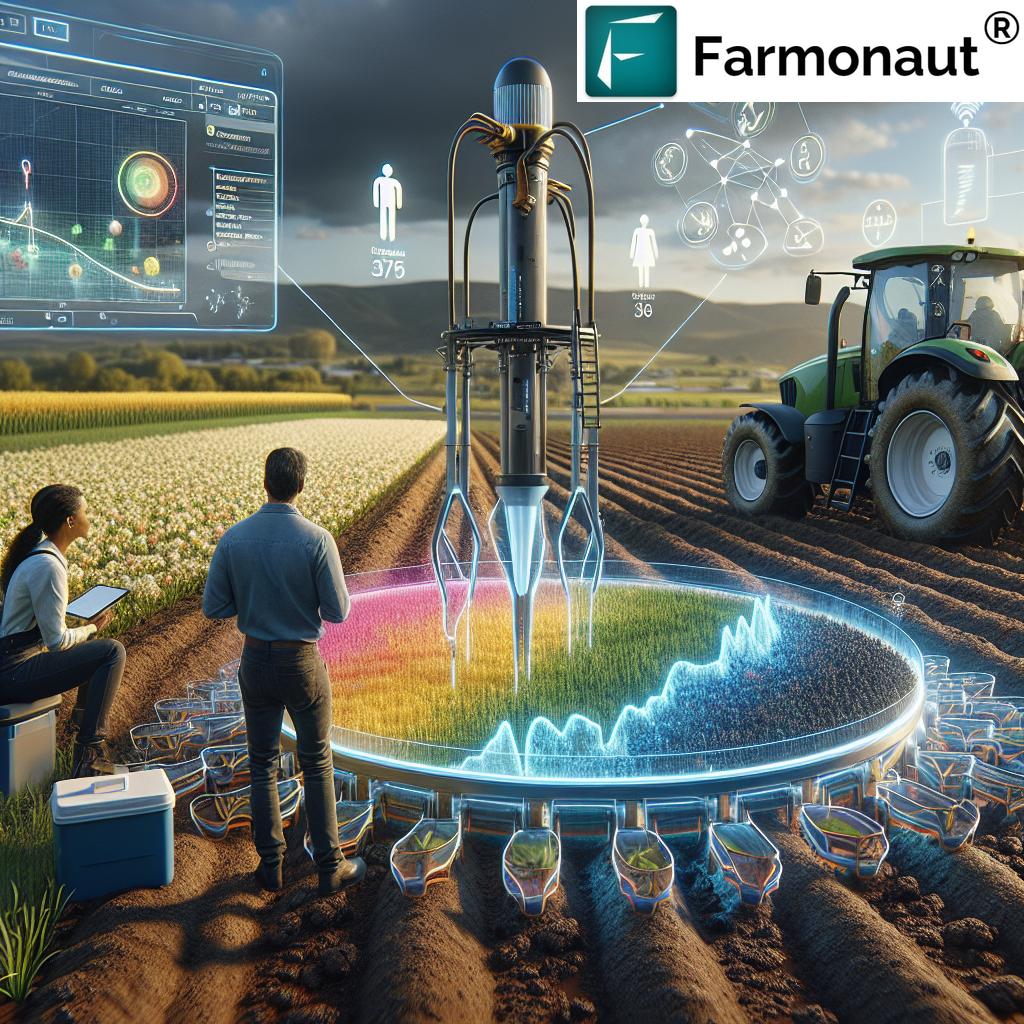
Farmonaut’s Role in Precision Agriculture
At Farmonaut, we’re committed to making precision agriculture accessible to farmers worldwide. Our platform offers:
- Real-time crop health monitoring using satellite imagery
- AI-powered advisory systems for farm management
- Blockchain-based traceability solutions
- Resource management tools for optimal farm operations
Our solutions are designed to integrate seamlessly with variable rate seeding and other precision agriculture techniques, providing you with a comprehensive toolkit for modern farming.
Explore our solutions:
Challenges and Considerations in Implementing VRS
While the benefits of VRS are significant, there are some challenges to consider:
Initial Investment
Implementing VRS requires an upfront investment in technology and equipment. However, the long-term benefits often outweigh these initial costs.
Data Management
Effective VRS relies on accurate data collection and analysis. Farmers need to develop strategies for managing and interpreting large amounts of data.
Technical Expertise
Operating VRS equipment and interpreting data requires some technical knowledge. Training and support are crucial for successful implementation.
Field Variability Understanding
Every field is unique, and understanding the specific variables affecting your crops is essential for creating effective VRS prescriptions.
The Future of Variable Rate Seeding
As technology continues to advance, we anticipate several exciting developments in VRS:
- AI and Machine Learning: Enhanced predictive models for more accurate seeding prescriptions
- IoT Integration: Real-time data collection from field sensors for dynamic seeding adjustments
- Drone Technology: High-resolution field mapping and potentially even seed distribution via drones
- Precision Planting Equipment: More sophisticated seeders capable of individual seed placement
These advancements will further improve the precision and effectiveness of VRS, leading to even greater yields and resource efficiency.
Comparison: Variable Rate Seeding vs. Traditional Seeding
| Factors | Variable Rate Seeding | Traditional Seeding |
|---|---|---|
| Seed Distribution | Precision-based, tailored to field variability | Uniform across the field |
| Soil Analysis | Detailed mapping and zoning | Basic soil testing |
| Technology Used | Advanced GPS/satellite, AI, and data analytics | Manual methods or basic machinery |
| Yield Potential | Optimized for each field zone | Variable, often suboptimal |
| Resource Efficiency | High, with minimal waste | Moderate, potential for overuse or underuse |
| Cost-Effectiveness | Higher initial investment, long-term savings | Lower initial cost, potentially higher long-term expenses |
| Environmental Impact | Reduced waste and resource use | Potential for overuse of seeds and inputs |
| Data-Driven Decisions | Continuous improvement based on detailed analytics | Limited insights, often based on general observations |
Implementing VRS with Farmonaut
Farmonaut’s platform provides the tools and insights needed to implement effective variable rate seeding strategies:
- Satellite-Based Crop Monitoring: Our advanced satellite imagery provides detailed insights into crop health and field variability.
- AI-Powered Analytics: Our Jeevn AI system analyzes field data to provide personalized recommendations for seeding rates.
- Integration Capabilities: Our platform can integrate with various farm management systems and VRS equipment.
- User-Friendly Interface: Access all your farm data and insights through our intuitive web and mobile applications.
For developers and agribusinesses looking to integrate our technology:
Getting Started with Variable Rate Seeding
Ready to revolutionize your farming practices with variable rate seeding? Here’s how to get started:
- Assess Your Farm: Evaluate your current farming practices and identify areas where VRS could make a significant impact.
- Gather Data: Start collecting comprehensive field data, including soil maps, yield history, and topography.
- Invest in Technology: Consider upgrading to VRS-capable equipment and investing in farm management software.
- Develop a Strategy: Work with agronomists or precision agriculture specialists to create a VRS plan tailored to your farm.
- Implement and Monitor: Begin implementing VRS on a portion of your farm, carefully monitoring results and adjusting as needed.
- Continuous Learning: Stay informed about the latest developments in precision agriculture and VRS technology.
Conclusion: Embracing the Future of Agriculture
Variable rate seeding represents a significant leap forward in agricultural technology, offering farmers the tools to maximize yields while optimizing resource use. By embracing VRS and other precision agriculture techniques, we can create a more sustainable and productive future for farming.
At Farmonaut, we’re committed to supporting farmers in this journey towards precision agriculture. Our platform provides the data, insights, and tools needed to implement effective VRS strategies and revolutionize your farming practices.
Are you ready to take your farm to the next level with variable rate seeding? Explore our solutions and join the precision agriculture revolution today!
Frequently Asked Questions
1. What is variable rate seeding?
Variable rate seeding is a precision agriculture technique that adjusts seed planting rates based on field variability to optimize crop yields and resource use.
2. How does variable rate seeding improve crop yields?
By tailoring seed populations to specific field conditions, VRS ensures optimal plant density for each area, leading to improved crop health and higher yields.
3. What equipment is needed for variable rate seeding?
VRS typically requires GPS-enabled planters, prescription mapping software, and data collection tools such as yield monitors and soil sensors.
4. How does Farmonaut support variable rate seeding?
Farmonaut provides satellite-based crop monitoring, AI-powered analytics, and data management tools that support the implementation of effective VRS strategies.
5. Is variable rate seeding cost-effective for small farms?
While there is an initial investment, VRS can be cost-effective for farms of various sizes by improving yields and reducing input costs over time.
6. How does VRS contribute to sustainable farming?
VRS promotes sustainability by optimizing resource use, reducing waste, and minimizing the environmental impact of farming operations.
7. Can VRS be used for all crop types?
VRS can be applied to many crop types, but the specific strategies and benefits may vary depending on the crop and local conditions.
8. How often should VRS prescriptions be updated?
VRS prescriptions should be reviewed and updated regularly, typically on an annual basis or when significant changes in field conditions are observed.
9. How does weather affect VRS strategies?
Weather patterns can influence VRS strategies by affecting soil moisture, planting dates, and overall crop growth. Farmonaut’s platform integrates weather data to help refine VRS prescriptions.
10. Can VRS be integrated with other precision agriculture techniques?
Yes, VRS works best when integrated with other precision agriculture practices such as variable rate fertilization, precision irrigation, and crop health monitoring.









